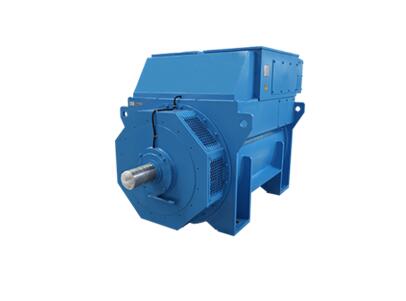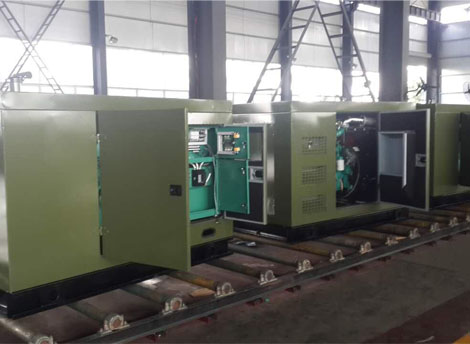The noise of generator set is mainly comes from engine and generator. To reduce the noise of the generator set, it is necessary to control the noise source. This article will show you the detailed information about the genset noise source as well as the solution.
The main noise source of engine is as follows:
Induction noise
Exhaust noise
Combustion noise
Mechanical noise
Cooling fans noise
The main noise source of generator is as follows:
Ventilation noise
Electromagnetic noise
Mechanical noise
Main noise source of engine
1. Air intake and exhaust system noise is the most powerful noise source of the engine.
The main source of intake noise is as follows:
1) The pressure fluctuation of air in the intake pipe, which results in low frequency noise.
2) The air flows through the flow area of the intake valve at high speed, which results in high frequency eddy noise.
3) The noise of turbocharger compressor
4) The noise of scavenging pump for two-stroke diesel engine
The main source of exhaust noise is as follows:
1) The pressure fluctuation of exhaust gas in the exhaust pipe, which results in low and intermediate frequency noise.
2) High frequency eddy current noise at the flow area of exhaust valve.
2. Combustion noise
Combustion noise is the main noise source of internal combustion engine. The burning of combustible mixture in the cylinder causes a sharp change of gas pressure. The piston, cylinder liner, connecting rod, piston pin and crankshaft parts are subjected to impact load, which causes structural vibration and noise.
3. Mechanical noise
The main components to cause mechanical noise include piston, cylinder head, cylinder liner, cylinder block, connecting rod, piston pin, crankshaft, valve gear, drive gear and fuel injection pump, etc. Therefore, the design of these parts, manufacturing quality as well as the material selection have an important effect on the noise. The diesel engine stiffness, rotating speed, and movement clearance are the main factors to afftect the mechanical noise.
4. Cooling fan noise
It results from the sound of air being moved at high speed across the engine and through the radiator.
Main noise source of generator
1. Ventilation noise
It includes fan and other ventilation equipment as well as the gas weirl noise formed by rotor. Fan rotation makes cooling gas periodic fluctuation so as to produce the single frequency noise. Resonance of thin wall parts in wind path, or the “piping” produced due to unreasonable return circuit design.
2. Electromagnetic noise
The noise refers that due to the interaction of stator and rotor magnetic field in generator air gap, it produces radial force changing with time and space, causing stator core and engine base to vibration due to periodic deformation over time so as to produce noise.
3. Mechanical noise
The mechanical noise of generator includes the mechanical vibration noise (caused by centrifugal force that is produced by rotor mechanical unbalance), bearing ventilation noise, brush connector ring or commutator sliding contact noise, and the axial vibration noise of end cap excited by bearing vibration.

Noise Reduction Measures
There is no doubt that it will have certain effects on the surrounding environment and personnel if the working noise of the machine is too large. Therefore, some necessary noise reduction measures should be taken. In addition to reduce the noise of generator set itself, it is also important to carry out special design for generator room.
1. Room sound insulation
The room door and window should adopt fireproof sound insulation door and window. Besides, the sound insulation requirement of brick wall needs more than 40dB (a). On the other hand, it is also important to eliminate sound paths through cracks in doors or walls.
2. Air intake and exhaust
After dealing with room sound insualtion, you should turn to solve the problem of ventilation and heat dissipation in the generator room. The air inlet shall be in the same line as the generator set and the air outlet. The air inlet shall be equipped with resistive chip muffler. Due to the air inlet pressure loss is within the allowable range, it can make the air flow in the room reach balance naturally, meanwhile, the effect of ventilation and heat dissipation is obvious.
3. Exhaust muffler
In general, generator set is always equipped with an exhaust muffler to limit exhaust noise from the machine. Exhaust silencer comes in a wide variety of types, it is usually divided into two types: chamber-type silencer and spiral type device. The chamber-type device tends to be more effective, but the spiral-type device is more compact and may provide sufficient attenuation for many equipments.
4. Sound absorption treatment
In the machine room, the five walls except for the ground can be used for sound absorption treatment. According to the frequency spectral characteristic of the generator set, the perforation board resonance sound absorption structure is adopted. In addition, acoustic insulation – sound-absorbing materials are available for lining air ducts and covering walls and ceilings. Reducing noise at a wall covered in sound absorbing material can be very effective.
5. Air exchange in the room
Good sound insulation in the generator room will make there is no air convection in the machine room when the closed water-cooled generator set power off, the high temperature in the room can’t be lowered in time. To solve the problem, you can adopt low noise axial flow fan and equip with a resistive chip muffler.
6. Cooling air attenuation
Inlet and outlet air attenuation baffles can help reduce the noise produced by the cooling air as it moves across the engine and through the radiator.
7. Unit vibration isolation
Before installing the generator set, users should strictly follow the relevant information provided by the manufacturer to carry out vibration isolation treatment so as to avoid the long-distance transmission of structural sound, which continuously radiate air noise in the propagation so that the factory noise level fail to reach standard. For the generator units that are required to deal with due to exceed standard, the vibration of the ground near the unit must be measured. If the vibration is obvious, the vibration isolation treatment of the generator set must be carried out first.

Maybe You Are Interested: Generator & Generator Set
Copyright © Guangxi Dingbo Generator Set Manufacturing Co., Ltd. All Rights Reserved | Sitemap
Update cookies preferences